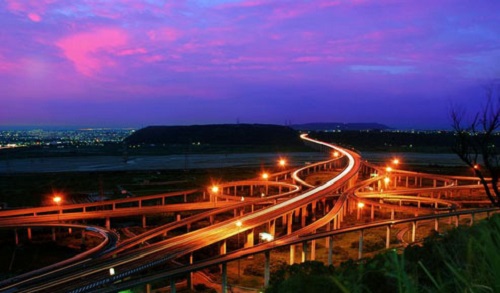








We have written about the debate over LED street-light color temperature or CCT. I remain convinced that cooler CCTs, perhaps in the 4000K range, are optimum because I believe we see better at night under such conditions. Of course, the American Medical Association (AMA) and others have voiced opposing opinions .
The solid-state lighting (SSL) industry has certainly reacted to public outcry, although I believe that outcry is from a vocal minority. Lighting manufacturers are delivering more products at warmer CCTs. For example, Cree launched its light-guide-based RSW luminaire at 3000K and recently added a 2700K version . But the fact is CCT doesn't matter in any case, while spectral power distribution (SPD) is critical. And the US Department of Energy (DOE) has new research that suggests LED street lights are not impacting sky glow to the extent warm-CCT advocates have claimed. We also have a compelling feature that explains how you can have a cool CCT with none of the feared blue energy in the SPD.
Let's start with the DOE work. The agency set out to study typical LED street lights being broadly deployed and compare them with legacy HID street lights using sources such as high-pressure sodium lamps.
The research is based on around 200,000 computer simulations of commercially-available LED and HID street lights with sets of modeling runs changing one variable at a time. The LED street lights generally are more directional than HID street lights, so in many cases, the LED installations will contribute less light spill to sky glow. Indeed, the DOE said some of the LED luminaires generate as little as 20% of the uplight of legacy products in unweighted tests. In fairness, some of the LED products also generate more uplight.
Still, the results are encouraging. The research assumes ground reflectivity of 15%; essentially, that is the only source of uplight with well-designed LED luminaires. The DOE said that for a far observer located 40 km from a city center, LED and beam-forming optic technologies reduce the contribution of street lights to sky glow by 95%. You can find more details in our news .
The DOE emphasized a point I have made repeatedly. The problem is operational light levels. Street lights can and should be dimmed. And poor lighting design contributes more to sky glow than LED technology at cool CCTs. The DOE emphasized that CCT is not an appropriate way to characterize street lights for either sky glow or as a blue-light hazard for human eyes.
We also have a feature article from Soraa that supports the point about CCT and SPD (p. 45). Soraa has used a violet emitter in phosphor-converted white LEDs, whereas most of the industry uses a blue pump. The violet pump has been part of a strategy to render whites and colors optimally.
But with public concern over a blue hazard, Soraa is using the violet-based technology to address any fears. The company is developing LEDs that have a complete lack of energy in the blue region that is known to be a hazard. Yet phosphor technology and the violet pump will allow the company to produce any CCT with high CRI performance.
It remains to be seen how the Soraa technology will come to market. The company has not sold its LEDs at the component level in the past. We should learn more soon.
Meanwhile, I'd hope that the naysayers learn more about what really matters.
Copyright 2006-2025 Shanghai Sinoexpo Informa Markets International Exhibition Co., Ltd. All rights reserved